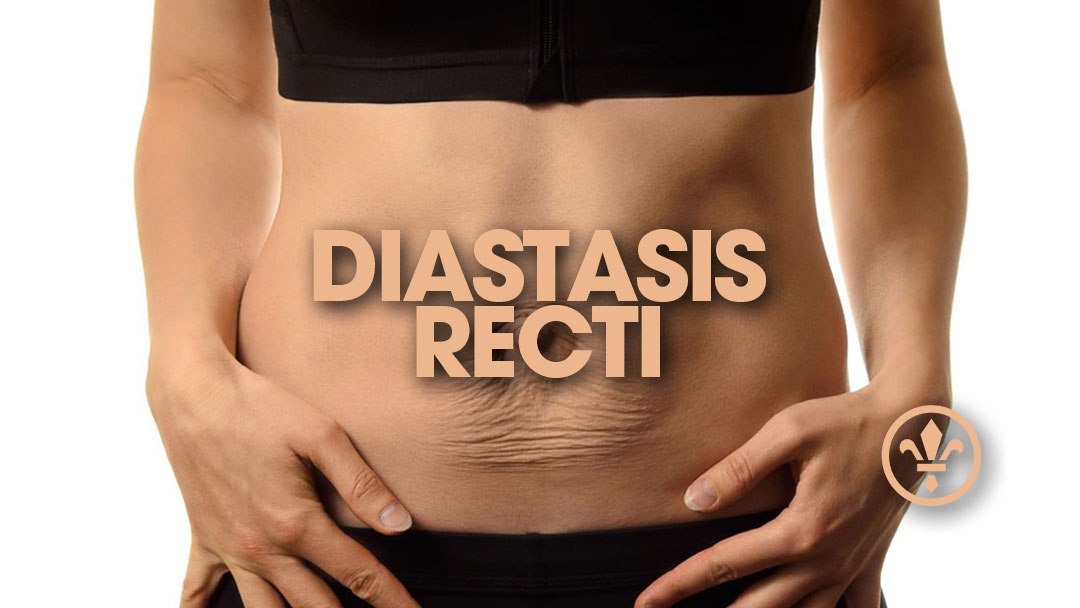
By Jessica Petersen - Director of Tennis and Pickleball
Diastasis Recti affects 1 in 3 women across the world.
Diastasis Recti is a separation in the abdominal wall. This condition is so common, but until recently has rarely been discussed by healthcare professionals. Diastasis Recti affects both men and women, but because the primary reason for this condition is excessive and continuous pressure on the abdominal wall it is very common in women during pregnancy.
If you know you have Diastasis Recti I am going to share some guidelines for you to follow when you workout. These are things you can also keep in mind as you function through daily life.
Quick Note: I am not a licensed healthcare professional or physical therapist. I have Diastasis Recti and have training in the physical fitness realm for dealing with this condition.
#1 – Do not AGGRAVATE it!! You never want to aggravate the separation of the abdominal wall by putting undo pressure on the wall. You can tell pressure is being applied when the abdominals bulge forward and you are unable to hold them in and down. Always focus on keeping the ribs closed like a book and pulling the belly button up and into the spine! A good example is when we sit up out of bed…Next time you get out of bed pay attention to what happens with our abs! Do they bulge forward as you sit up? If you have Diastasis Recti they probably do so instead of sitting straight up, try rolling to your side to get up.
#2 – ADVOCATE for yourself and make or ask for modifications! Abdominal crunches are one of the worst exercises for someone with Diastasis Recti and it is one of the most common exercises in workouts. Anytime the abdominals bulge forward and you cannot hold them in you need to modify. If you are in a group fitness class or under private instruction be sure to always tell your instructor that you have Diastasis Recti, how large the gap is (3 finger gap, 2 finger gap, etc.) and how long you’ve been dealing with the condition. If you know your own modifications, modify!! Remember that the workout is for you…it’s your time to connect with YOUR body!
#3 – Regain STRENGTH! With work and these daily exercises you can repair and strengthen the abdominal wall slowly without overload or stress…
EXERCISES:
Supine Drawing Up & In – Lie on your back, knees bent with your hands on your belly and exhale as you pull your belly button up and in towards your spine! You can think about tightening a corset around your waist!
4 Point Kneel Drawing Up & In – In a 4 point kneeling position with wrists under shoulders and knees under hips you will do the same thing…exhale as you pull your belly button up and in towards your spine! Narrow your corset!
Wall Plank Drawing Up & In – In a plank position standing up against a wall (hands on wall and feet away from wall so you are in a diagonal position) you will do the same thing… exhale as you pull your belly button up and in towards your spine! Narrow your corset!
Shallow Curls – Lying on your back with your legs long you will exhale as you take a shallow curl by drawing your head off the floor. Your hands will be on your abdominals so as you exhale and take your shallow curl you will focus on holding the abdominals in and closed. If you are able to maintain control you can progress to drawing your shoulders off the floor and so on until you will eventually be able to do a full roll-up to a seated position while maintaining control of the abdominals.
Single Leg Lifts – Lying on your back with your legs long you will exhale as you pick one leg 3-4 inches off the floor and then lower it back down. Your hands will be on your abdominals so as you exhale and lift the leg so you can focus on holding the abdominals in and closed. You will continue alternating legs. This can progress to eventually being able to lift both legs off the ground while maintaining control of the abdominals.
These are just some examples of exercises you can do to help regain strength and close the gap!
The next time you go to workout keep these things in mind and with time that gap will narrow and you’ll be stronger than ever by connecting with your body! Again, if you have further questions or concerns please seek the guidance of a physical therapist or healthcare professional.
Jen Azevedo is a tennis professional, pickleball professional, personal trainer, group exercise instructor, and the general manager of the Paseo Club. She loves the community at the Paseo Club and that it is also a safe and fun place for her daughter. Jen’s favorite activities are joining her tribe for trail races or her partners for tennis matches. Occasionally Jen slows down to relax with a book — she reads over 100 a year!
Topics:

